
Struggling to reach your target audience on social media?
As a business, reaching your target audience is crucial for success. As a marketer, it’s simply not enough to use fancy tools and clever strategies to reach a bunch of people if none of those people are part of your targeted audience. As a brand, the most relevant people to you, especially in your marketing is your target audience. These are the individuals who are customers of you and carry characteristics which the people who buy from you do. As such, this means that they’ll be far more likely to buy from you than anyone else, since they have experienced the pain point your brand is solving, and they are aware that a problem exists.
You’ve probably seen the impressive social media marketing statistics which proves the immense power of social media and the incredible results that it has been able to show for, and that looks awfully promising, doesn’t it?
While I am a huge believer in social media and leveraging it as a marketing tool, I am also a huge believer in no bullshit.
What does this mean? It means that while social media has proven to be effective in helping brands generate marketing results, it’s only a marketing tool. And the fact is, a tool is only effective and helpful if you use it correctly.
The foundation for successful marketing is reaching your targeted audience. It doesn’t really matter if you are reaching millions of people if those people have zero interest in your business. If you would, you’d be wasting your efforts and struggle with generating any real results, apart from vanity metrics which look impressive on the outside, but in reality, mean very little for real marketing objectives.
Now social media is an amazing marketing tool, but it is crucial that you use it correctly. In this article, you’ll, therefore, learn, how and where to find your target audience on social media.
With social media now boasting billions of users, finding your target audience can be even more challenging, as the noise is quite high, and identifying the real target audience among the crowd can be a challenge, to say the least.
On paper, reaching a lot of people on social media looks good, but what truly matters is who those people are and that they are your target audience. Fortunately, there are a number of ways you can go about identifying where your target audience spends time on social media and then reach them with your messages in order to generate great results.
How to find your target audience on social media
Before you can go about looking where to find your target audience on social media, you need to identify and define your target audience and their characteristics so you can get a better understanding of where they are spending their time.
Identifying where your target audience is spending their time is crucial on social media because if you aren’t where your target audience is, you’ll never sell anything.
Imagine yourself trying to sell sand in the Sahara desert. It doesn’t matter how amazing deals you have or that you offer a 2 for 1-kilo deal. The demand for sand just isn’t there, and in order to sell something, there has to be a supply and a demand. It’s safe to say that as a person selling sand, your target audience isn’t to be found in the Sahara desert. You might be better of trying to sell sand to golf clubs in other countries, or to luxury resorts that need sand for their beaches.
The bottom line is that before you start selling, you need to understand where your target audience is and where they aren’t. Thus, you also need to identify where your target audience spends their time and where they don’t. Before you can sell to someone, you need to ensure that they are people who would actually buy from you.
And the foundation for doing this is defining characteristics of your target audience on social media. And it’s not a huge surprise, but for brands, your target audience on social media is exactly the same as your target audience in general, because social media is just another way of reaching them.
Define your target audience
Not only will defining your target audience on social media help you reach more relevant people, but it will also help you speak to them and make them relate to you in a better way.
Start with the basic questions such as:
- What gender are they?
- Where are they from?
- What do they like and dislike?
- Are your ideal customers locals who are close to you or far away?
- How much money do they make?
- How old are they?
Just asking (and answering) these basic questions is a great start because it will allow you to specify and shrink your net’s size to become more targeted to reach the people who truly matter to your brand. When you’ve defined these questions, you’ll be able to use this information to better understand where your target audience spends their time on social media.
A huge part of finding your target audience on social media is understanding that social media platforms differ a lot in terms of users in their user base.
Some platforms, for example, have a user base which consists of mostly teenagers and younger users, while platforms like LinkedIn has a much older user base, as well as different types of people who are using it since they are professionals. If you’re on the other hand, targeting professionals and people from the older generations, and then using Instagram as your marketing tool, you’ll probably struggle to see results, since Instagram’s user base is mainly made up of younger users – even though Instagram’s user base has aged over the last couple of years.
If you’ve identified your target audience’s characteristics and then clearly aren’t targeting them effectively, you’re wasting your efforts and money, and this is the whole reason why you want to find your target audience on social media in the first place.
How to find your target audience on social media: different social media platforms
Choosing which social media platforms to focus on based on your target audience is one of the most fundamental building blocks for effective targeting.
This is what lays the foundation for finding your target audience until it is time to start digging into the more fine-tuning actions and strategies.
Understand that all social media platforms are different. Not only in how you use them, but in this case, most importantly, in their user bases, and who the people who are using them are.
There’s a common misconception that you should use every single social media platform you should come across, but that is just not the case. First off, the only time you should even consider implementing all the social media platforms out there into your marketing strategy is when you have a ton of resources for managing them effectively, This is without spreading yourself short and risking quantity over quality.
Managing social media platforms is a lengthy and hard task, and going from two social platforms to 5 is quite a big difference if you are going to do it well.
Since your resources are limited, it is better to identify the social platforms that truly matter to you, and then double down on those to generate the best possible results from your efforts.
The first step is obviously looking at the user bases of the different platforms. When looking them up, what you’ll find is that the demographics of the various platforms varies a lot.
Secondly, another factor that will also determine your success on the platform is what type of platform it is, and what type of content that is circulating around. For example, YouTube is a video-only platform, and even if your target audience is to be found on the platform, it doesn’t matter if you have no idea on how to create an amazing video or have any plans in learning how to do so.
This is why, in choosing which social media platforms to use to find your target audience on social media, you need to also factor in content into the equation.
The bottom line is that in order to determine which social media platforms are the most effective for reaching your target audience, look at its demographics and the type of platform it is.
Survey customers
The caveat is that the demographics of a social media platform won’t tell you everything. Instagram has about 1 billion users now. Let’s say that 80 percent of its user base would consist of females. Now, on the surface, it can seem like the platform is absolutely worthless to use if you’re a brand targeting males, but at the same time, remember that 20% of 1 billion is quite a lot, right? That’s more people than most brands will ever reach.
And while the majority of users consist of females, it doesn’t mean you can’t generate great results if you’re targeting males. If you have the right strategies and know exactly how you’re going to reach your target audience on that platform, you can still generate impressive results.
The best way to do this isn’t by doing a guessing game, but instead, the best way to identify which platforms will be most beneficial for you is by surveying your customers asking which their favorite social media platform is, the people they follow on social media, and what type of content they enjoy consuming.
To effortlessly and effectively collect information, use Google Forms.
Determine Your Audience Size
Before you start working to find your target audience and ultimately reach it, it is helpful to find out your target audience size.
A great tool for doing so is using Facebook ads. Obviously, if you have a target audience in mind, and then find out that it consists of only a few hundred or a few thousand people, you might have to broaden your targeting. At the same time, if you are too broad, you might want to specify your target audience a little better in order to reach your target audience more effectively.
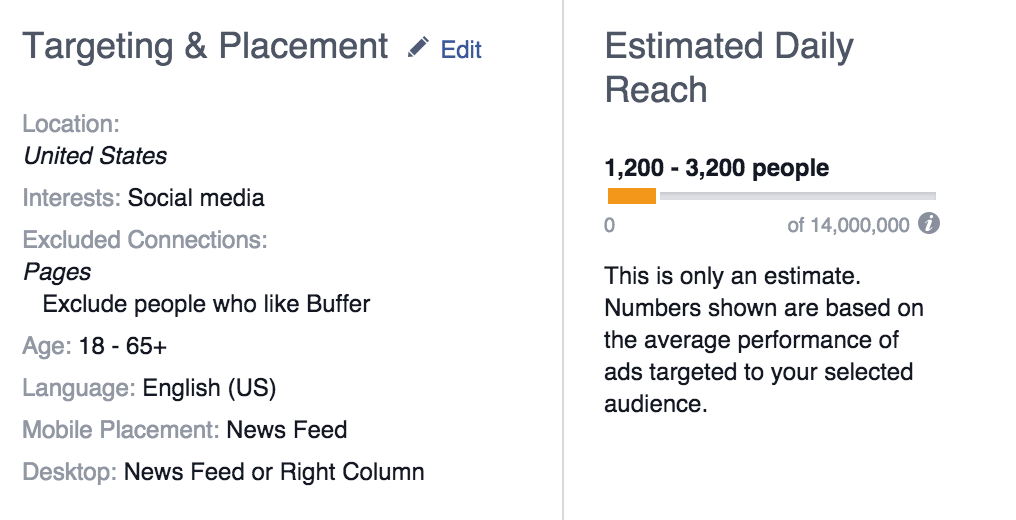
To use Facebook ads to estimate your target audience size, go to Facebook ads and start creating your ad. Now, type in the criteria and traits which your target audience has in common, and then look at how broad or specific that targeting is. It is better to be too specific than too broad since you’ll generate better results from a smaller, more engaged niche than going after a huge audience base. Furthermore, being more specific will also help you use your money more wisely with ads.
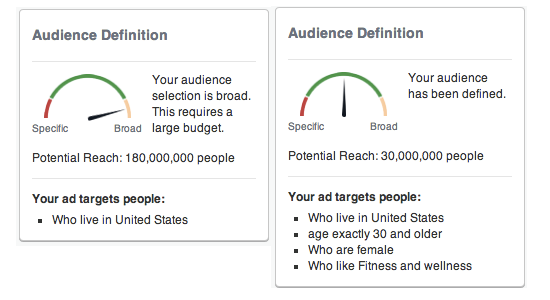
A great way to define your target audience is by specifying interests. If the people you are targeting are, for example, interested in our competitors and the industry you’re operating in, chances are, they will be interested in you.
Understanding the demographics of the top social media platforms
As you know by now, all social platforms vary in their demographics. This is why it’s crucial to understand what their demographics look like before jumping head first into them.
Here is some demographic information about some of the top social media platforms:
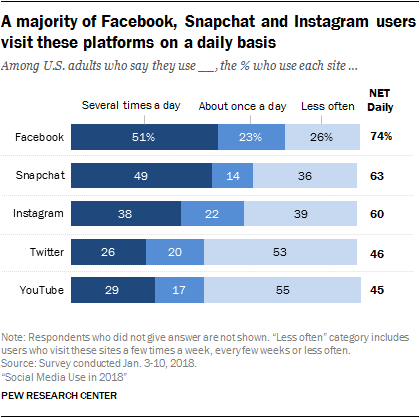
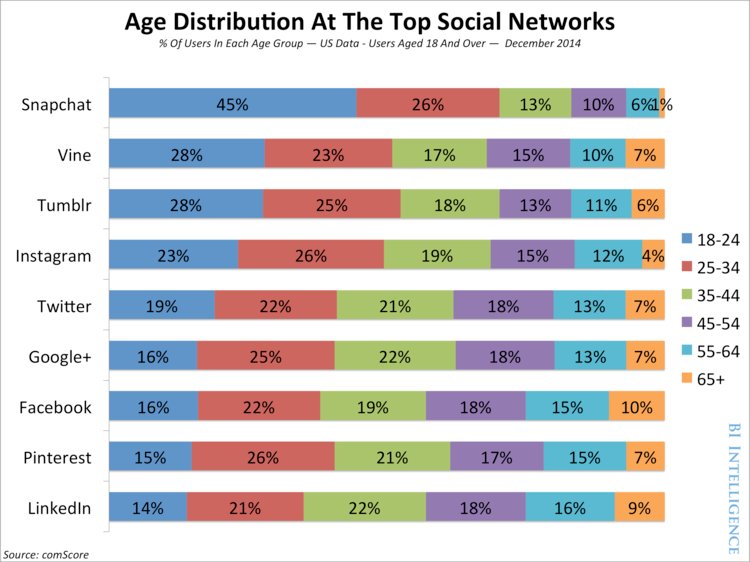
Facebook Demographics
What’s so great about Facebook is that because of its immense size, it has the target audience of a ton of different businesses. The vast majority of brands can find their target audience on Facebook, especially since Facebook’s user base isn’t dominated by a particular audience, but relatively evenly spread out between gender, ages, etc.
This is also a reason why Facebook is the most popular social media platform for businesses.
Here are some user demographics of Facebook:
- Facebook users are 53% female and 47% male.
- 56% of online Seniors aged 65+ are on Facebook and 63% are between age 50-64.
- 87% of online users of age 18-29 are on Facebook.
- 83% of adult women use Facebook
- 12% of users are from the United States.
These statistics are only scratching on the surface, but as you can see, the demographics of Facebook is quite evenly divided between ages, genders, etc.
Instagram Demographics
- 68% of Instagram users are Females.
- The majority of Instagram users (59%) are 18- to 29-year-olds
- 39% of adults living in urban areas use Instagram
- 59% of internet users between the ages of 18 and 29 use Instagram.
- 33% of internet users between the ages of 30 and 49 use Instagram.
- 38% of female internet users use Instagram.
- 6% of male internet users use Instagram.
The user demographics of Instagram are quite evenly sorted, but what stands out is that the female users are making up the majority of users on the platform.
Twitter Demographics
What’s especially unique about Twitter is that 79% of accounts are located outside the United States.
- 24% of All Internet male users use Twitter.
- 21% of All Internet Female users use Twitter.
- 37% of Twitter users are between the ages of 18-29.
- 29, 25% of users are 30-49 years old.
- 30% of adults who make more than $75,000 use Twitter
LinkedIn Demographics
LinkedIn is known to be a social media platform, or more a social media network for professionals. It is clearly tied to business purposes and networking as opposed to other social platforms that are more about entertainment and chatting.
- 18- to 29-year-olds make up the highest demographic of 34%.
- 33% are 30- to 49-year-olds.
- 31% of online men use LinkedIn
- 45% of adults who make more than $75,000 use LinkedIn
Pinterest Demographics
Pinterest is a photo-sharing platform for inspiration, and it is well-known to be a social platform whose main user base consists of women.
In fact, 81% of Pinterest users are Females.
- At the same time, 40% of New Signups are Men; 60% New Signups are Women, which means the user base is getting more even.
- Men account for 7% of total pins on Pinterest.
- Millennials use Pinterest as much as Instagram.
- The median age of a Pinterest user is 40. At the same time, the majority of active pinners are below 40.
- 36% of 18- to 29-year-olds use Pinterest.
- 34% of 30- to 49-year-old use Pinterest.
How to find your target audience on social media
Now that we got that out of the way, and you know that the user bases of the top social platforms vary, it’s time to dig into the more actionable part of this article with tips and tricks to reach your target audience on social media, and where you should look to find them.
Finding your target audience on social media isn’t that hard, really. At least not when you know where to look.
1. Join targeted groups
A great way to find your target audience on social media is by joining targeted groups dedicated to a specific interest and niche. This, of course, should be a group that is focused on your brand’s own niche and industry.
The best part about doing this is that the group has already done half the job for you. Since the people in the group has gathered around a shared interest, the people who are in the group are genuinely passionate about that niche and industry, and this also means that they probably will be interested in your business as well.
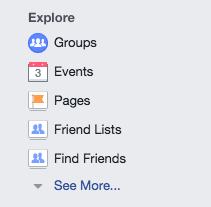
Groups are especially common on Facebook, but another place you can join them is on LinkedIn.
Be careful, though, because many people make the mistake of joining a group and then promoting their brand and products like crazy, and because they’re instantly viewed as a spammer who isn’t bringing any real value to the group, they’ll be kicked out immediately.
This is what happens if you try this approach as well.
So what should you do instead? Instead of focusing on promoting and selling, focus on making a name for yourself within the group and establishing yourself as an expert and thought leader by engaging with posts, asking questions and getting to know your audience. Your goal is to provide as much value as possible, not selling as much as possible.
Then, when you’ve provided a ton of value to the group, you can, every now and then, share a promotional message where you promote yourself. Before you do this, though, make sure you’ve studied the rules within the group.
To find a Facebook group, use Facebook’s search bar to find groups that match your ideal customer’s interests.
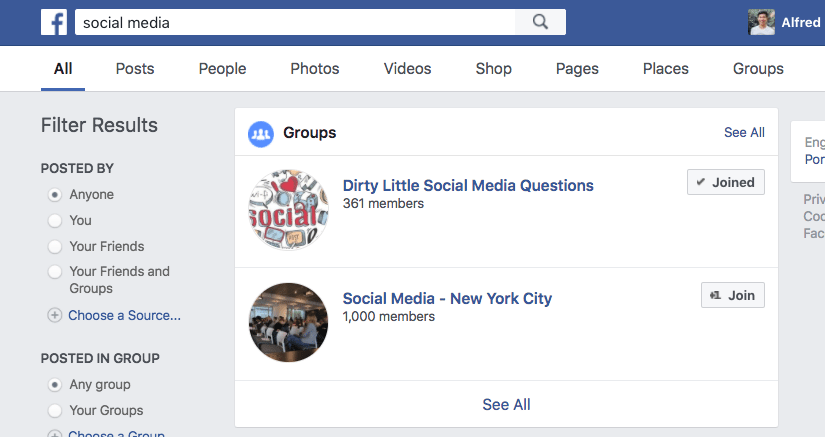
2. Invest in targeted advertising
Targeted advertising through social media ads is one of the most effective, if not the most effective way to find and reach your target audience on social media.
The social media platforms collect a ton of information about their users, and as a marketer, this is great news, because what it means to you is that you can leverage that information to run targeted ads. With most other ways to find your target audience on social media, you need to work actively in order to find and reach them, but with this method, you only need to know the characteristics of your target audience. Then, you let your money work for you.
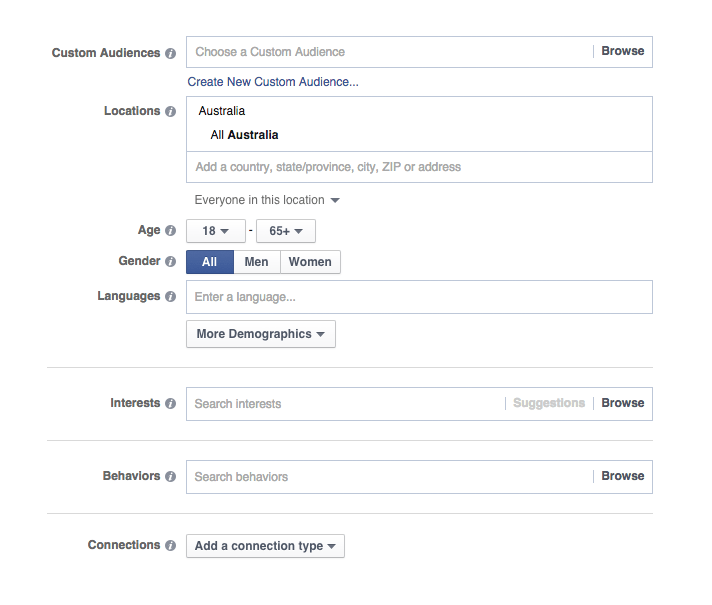
Facebook ads are the most popular social advertising platform of this era, and it is also considered the most powerful. There are of course several other places where you can run ads, such as Snapchat and Twitter, however, since Facebook has the larger user base and has been in the game the longest, they hav
e been able to refine and perfect their advanced ad tool which enables laser-targeted ads on the platform.
3.Influencer marketing
Believe it or not, but influencer marketing is actually a terrific way to reach your target audience on social media.
The reason is that influencers work almost as a targeted group, as mentioned earlier. The influencer is focused on a specific topic and niche, and therefore, they attract like-minded individuals who also have an interest in that niche and are interested in learning more and getting inspiration from the influencer.
What does this mean?
It means that influencers will attract people who are interested in their niche to their audience, and thereby, their audience will be quite targeted to the niche they’re focused on.

Influencer marketing has proven itself able to generate incredible marketing results as it has evolved just in the last couple of years, and a reason is that their audience is so targeted.
Another reason, however, is that the influencers are trusted individuals who have established themselves as experts within their niche, and this means that people will value and listen to what they have to say, much more than what brands say.
Just like groups, with influencer marketing, the influencer has already done the job of gathering a bunch of people who are in your target audience in one place, and then, you leverage that and have the influencer spread your message.
4.study your competitors
The way you find your target audience on social media is by identifying the places where they are spending time, and obviously, one of those places is your competitor.
On social media, your competitors have spent time and effort in attracting people to their page and reaching their target audience.
And remember, the whole reason why they are your competitors in the first place is that you have the same audience as your target audience, and you’re both fighting for their attention.
The good news is that if your competitors have already done the hard work of attracting targeted individuals, you can leverage that to find your very own target audience. There are many ways to find your target audience on social media using this method, but the best place to start is your competitors’ followers.
Simply take a look at the people who are following your competitors and reach out to them to make them aware of you. You can message them, engage with them, or use some other tactic. The goal is to make them aware of your existence.
Also, the best part about going after your competitors’ followers and audience is that since they are interested in your audience, they probably are going to be interested in your brand. For example, just because you are in the golf industry and reach out to golfers doesn’t mean that they will be interested in your brand. They might, for example, prefer more luxurious golf equipment, or might be looking for the cheapest alternative on the market, in other words not be in your target audience, even though they are interested in your industry.
Another way to leverage your competitors on social media to find your target audience is to look at the people who have engaged and commented on your competitors’ posts.
The best part here is that you get more context about these individuals and can tailor your messages and outreaches to those individuals to better speak to them, and convince them to become customers of your brand instead.
The absolute best time when you get the very most leverage and have the highest chance of converting them is when the customers of your competitors are complaining and are disgruntled with those brands.
When these individuals are disgruntled, they’re unhappy with the current brand they are customers of, and therefore much more open to trying out a new company, and if you are at the right place at the right time, that brand might be you.
The bottom line is, use your competitors to identify relevant people who might be interested in your brand, and then make them aware of your existence, and ideally, provide them with something they don’t get from your competitors. Lastly, make sure to leverage disgruntled customers as these are more likely to convert.
Lastly, another way to leverage your competitors is by creating Facebook ads where you are targeting individuals who are interested in and are following your competitors.
5. Use hashtags
Hashtags can be used in two ways to find your target audience on social media, and I’ll go through the other ways in the next point.
The first way to use hashtags to find your target audience is not to find them, but to use them so that your target audience finds you.
Now, have in mind that hashtags aren’t effective and not used very extensively on all social media platforms, and so this works the best on platforms where hashtags are widely used, with Instagram in particular.
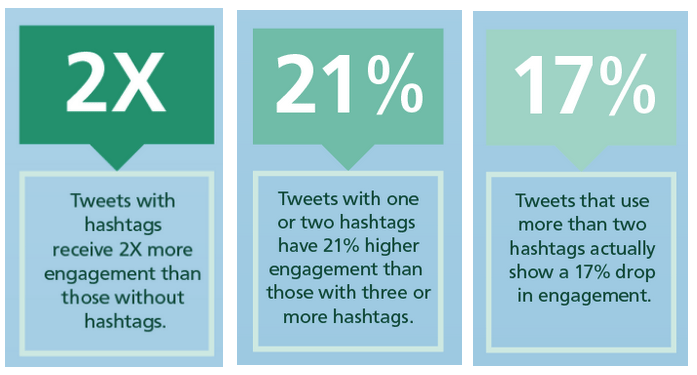
I’ll, therefore, use Instagram in this example.
Let’s say that I am interested in wine. If I would like to see what wines people are drinking and be inspired by other people’s wine posts on Instagram, I’d probably search for the hashtag ”wine” on Instagram. This would allow men to discover an array of different posts that are related to wine.
Therefore, as a brand, you can (and should) use hashtags that are related firstly to your post, and also your industry and niche.
What this does is it bring your posts more exposure, but not any type of exposure, exposure from your target audience. Also, this is the reason why it is so important to use relevant hashtags on Instagram, not just any hashtags or the hashtags that bring you the most likes or comments.
Identify which hashtags your target audience is using, and adapt your hashtags on Instagram to the posts you’re sharing to make sure the hashtags you use are relevant. This will increase your post’s visibility, and allow you to find your target audience on social media by making them come to you instead of the other way around.
if you’re not sure which hashtags you should use, Instagram has a built-in feature called suggestive tags. So when searching for a hashtag, you’ll get suggested hashtags that are related to that hashtag, and thus also likely to be used by your target audience. The suggested hashtags are presented at the top of the search bar when searching for hashtags.
6.Search hashtags
A similar principle as the point above applies to this method of finding your target audience on social media. The only difference is that you change roles with your audience, and instead are the one who searches for hashtags to find posts related to your industry and niche.
Simply search for hashtags related to your industry and niche, and then go through the posts that have been posted using that hashtag. What you’ll find is posts that have been shared by people who are interested in your industry and niche, and thus also probably potential customers of your brand.
The foundation for identifying customers is identifying that they have an interest in your industry (and thus also a need), and this is exactly what searching for hashtags on social media allows you do to by identifying posts that are related to your niche.
7. Look at location check-ins
Location check-ins can be used in a similar way as hashtags, and it is for local businesses where local check-ins are the most powerful. The good news, however, is that they can be leveraged by any business – both local and international.

On many social media platforms, you have a location check-in feature which enables you to check in to a specific location with your post to show that you are there. The best part is that you can also search for locations as a reverse, and by doing so, you can find individuals who are at specific locations, and this is information which can be tremendously effective when it comes to identifying your target audience on social media.
As a local business
As a local business, this feature is great, because as a local business, you’re mainly depending on the people who live and spend time in the area, and looking at people who have posted pictures in the surrounding area is a great way to identify people in the local area, and thus also potential customers. One way to go about doing this is by looking at check-ins close to your business either at competitors’ stores, or locations that show people are interested in your niche.
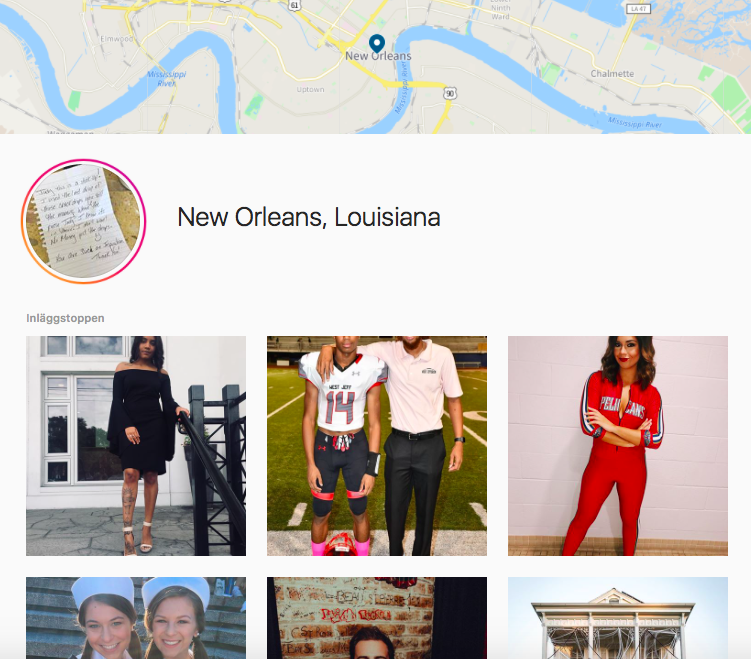
For example, if I am a small coffee shop, I could take a look at the people who have checked in to a local Starbucks nearby. Clearly, these individuals are people who are in the area and are interested in what I have to offer
As an international business (and a local business)
This method is quite similar to the methods mentioned above, the only difference is that it isn’t reliant on the fact that people are in a particular area, but they can be from all over the world. This means that the main focus here is to use location-check-ins on social media to look at people who have checked in to specific locations which show they have an interest in my industry.
For example, let’s say that I sell tennis equipment online. A great way to leverage check-ins to find my target audience on social media is to look at the check-ins of various tennis courts around the world. Obviously, the people who have checked in to that location are probably people who play tennis, and the best of all is that the post they’ve shared helps bring extra context and give you more insights about who they are and how you should best approach them.
Here, the context and information that you get from their post can help you come to them with a unique proposition which brings them value. For example, I might take a look at people who have checked in to a tennis court, and then see that one person has made a post about not being able to find tennis balls that are soft enough. Then, I could acknowledge that and reach out to them to let them know about my ultra soft tennis balls that I am selling.
Not only does this approach allow me to identify relevant prospects, but it also shows them that I’ve paid attention and can tailor and personalize my message accordingly.
8.Leverage lookalike audiences
Lookalike audiences are a tremendously powerful tool inside of Facebook advertising. The feature helps you create new audiences based on traits from one of the following sources:
- Custom Audiences: Upload a list of your existing customers using Custom Audiences. Then use Lookalike Audiences to find people that resemble that audience.
- Website visitors: Install a Facebook pixel on your site. Then create Lookalike Audiences based on people who’ve visited specific pages on your website.
- Page fans: Use Lookalike Audiences to create an audience based on people that like your page.
In other words, Facebook lookalike audiences allow you to use information from already existing customers of yours, which carry the characteristics that your customers have, and then leverage that information to find individuals who carry the same or similar traits, and are thus potential and likely customers of yours as well.
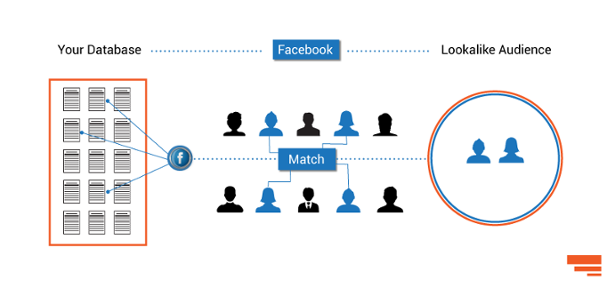
With lookalike audiences on Facebook, you can choose between setting interests to this audience that closely match your audience a larger audience, a broader audience of people who have similar interests, but not identical.
With lookalike audiences, you don’t have to do any of the job yourself of finding your target audience because Facebook takes care of all of that for you. All you have to do is select your existing customers and then pay for the ads.
With lookalike audiences on Facebook, you make sure that your customers come to you, not the other way around.
9 . Share kick-ass content
The foundation for success on social media by putting out content is providing value with your content, and making it better than everyone else’s so that it cuts through the noise.
If you have a value proposition that is far greater than any of your competitors, you’ll cut through the noise and reach people without having to do much further work yourself.

This is why quality content is so important and effective on social media.
First of all, you need to make sure that you share high-quality content on social media. In 2018, it’s simply not enough to share blurry photos or laggy videos. Today, anyone can take a high-quality photo with the device that’s in their pocket, and there are no longer any excuses for posting poor content.
10.Provide value
While sharing high-quality content is crucial in the context that the quality in itself should be high, what the content is about is equally, if not more important.
For success, your content needs to provide your audience value in one way or another. The reason is that when your content provides value, you create a value proposition for yourself, and when you have something of value, people will naturally come to you.
Now, there’s a misconception that what it means by providing value through your content is by providing real monetary value, but that is far from the truth.
Sure, that is one way, but most often, the value provided through content on social media isn’t monetary.
The most common forms of value through content on social media are:
- Humour
- Entertainment
- Information
- Knowledge
Many people use social media for entertainment purposes and for passing time, and so if you can provide your audience with content that brings them that, it means that you bring them a ton of value. To gain the best effect with your content, you need to identify the reasons why your target audience is using social media. According to that, you can develop content which is valuable to them and helps you attract your target audience on social media.
Conclusion
The foundation for successful marketing is not reaching as many people as possible.
It is reaching as many relevant people as possible.
Everyone isn’t relevant to your business and everyone aren’t your target audience, and every dollar and minute you spend trying to reach these people who just aren’t relevant to your business is wasted.
This is why to streamline your marketing efforts and get the most out of your marketing budget, you want to identify the people in your target audience who truly matter to you, and then double down on them in your marketing efforts.
Social media is a tremendous marketing tool for reaching people, but it is also a tremendous tool for identifying the right audience. With these approaches, you can identify the people who are most relevant to you, streamline your marketing, and increase the chance of conversion.


